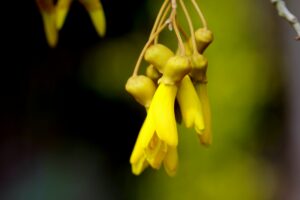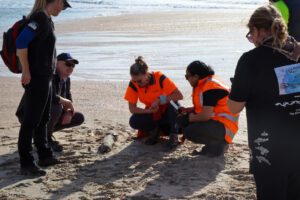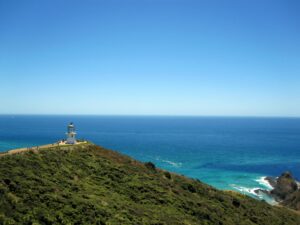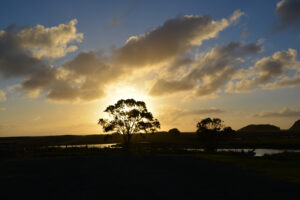Critical to the implementation of ‘Ara’ within our work programme is engagement with and involvement of haukāinga at all levels of the research programme, including design, data collection, interpretation and synthesis, and dissemination. This engagement supports the organic development of knowledge and understanding between local communities and scientists, enabling a framework focused on mutual learning and embedding mana-enhancing principles of reciprocity, partnership and participation.
We operate from a Kaupapa Māori framework, including pūrākau, wānanga, and hīkoi to reactivate Ngāti Kuri connections to our ancestral lands, that will develop new capability within the iwi, enrich scientific understanding of biodiversity and ecosystem interactions, and inform priorities for ensuring the ecosystem wellbeing across the rohe of Ngāti Kuri.
Critical to the implementation of ‘Ara’ within our work programme is engagement with and involvement of haukāinga at all levels of the research programme, including design, data collection, interpretation and synthesis, and dissemination. This engagement supports the organic development of knowledge and understanding between local communities and scientists, enabling a framework focused on mutual learning and embedding mana-enhancing principles of reciprocity, partnership and participation.
We operate from a Kaupapa Māori framework, including pūrākau, wānanga, and hīkoi to reactivate Ngāti Kuri connections to our ancestral lands, that will develop new capability within the iwi, enrich scientific understanding of biodiversity and ecosystem interactions, and inform priorities for ensuring the ecosystem wellbeing across the rohe of Ngāti Kuri.

Increasingly popular methods such as ‘walking interviews’ or ‘go-along interviews’ are being applied to qualitative research. Tipi haere will focus on the material and oral histories explored during interactions, engagement, and relationships evolved during in practice conservation and restoration work as well as site visits and land mapping activities.

Wānanga encourages a collective production of knowledge exchange. The reciprocal quality of wānanga enables co-production of a research ‘story’ that is rich and inclusive and embraces the concept of ako (shared learning) and participatory practices (Pihama, L., & McRoberts, H. (2009). Wānanga further encourages a strengthening of networks for ensuring partnerships which in turn creates a responsiveness to addressing a range of future barriers or enablers across a range of research disciplines.

All our research projects must include kaitiaki involvement, support and leadership. All land-based, practical and onsite hui must be conducted with Kaitiaki present. We have a range of kaitiaki specialising in all parts of our taiao and research spaces and we partner the right people to various projects.

Whakawhiti whakaaro, collective hui and one on one interviews support to capture and record oral histories. Whakawhiti whakaaro is a powerful human interaction that eventuates in an exchange of knowledge, memory and thoughts (DIPnet, 2012). Research conversations and interviews focus on relevant issues, aspirations and narratives of participants (Lee-Morgan, J., 2009). Smith (2012) reminds us to reflect on the two-way questioning that takes place and the effects an interview might stimulate.

At the heart of Pūrākau is pedagogical intent (Lee-Morgan, J, 2009), not merely stories Pūrākau are carefully crafted narratives fit for audience and imbued with teaching and learning opportunities. Utilising Pūrākau in our research enables a re-claiming, a rejuvenation of Indigenous epistemological and ontological constructs (Mikaere, A., 2011). A series of digital Pūrākau are often initiated to represent rangatahi voice, Kaitiaki and Kaumātua experiences.

We explore the whakapapa of; horticultural practices, maramataka, Māori astronomy and traditional conservation methods to name a few. Archival records are held with our team with dedicated search staff to understand and describe techniques and practices forthcoming. Archaeological records form grounded understandings of tūpuna interactions with specific areas, kaupapa and tāonga.

We will engage our key partners who have active and broad skills in building capacity, leadership and capability. A number of our proposed Senior advisors come with a network of support and proven track record in training and professional development. We have deliberately considered supporting advisors who are also experienced in Kaupapa Māori workshops and professional development offerings.
As a Centre we will be committed to the support and training for our own Ngāti Kuri research leaders grounded in tikanga and te reo and committed to our vision and mission. As part of our strategic direction, we will be seeking collaborations from

a range of external funders to establish new scholarships, fellowships and internships or link to available and current offerings. In our initial 3 years of development, we will be guided by senior researchers and institutes and partner to co-design and co-produce meaningful outcomes and tailored mentoring programme for tribal researchers. These are all notes as KPIs each year across each goal.
Key Contact:
Centre Director: Tammy Tauroa
Ngāti Kurī
COPYRIGHT 2022 | POWERED BY WORDPRESS | BUILT BY POU DIGITAL